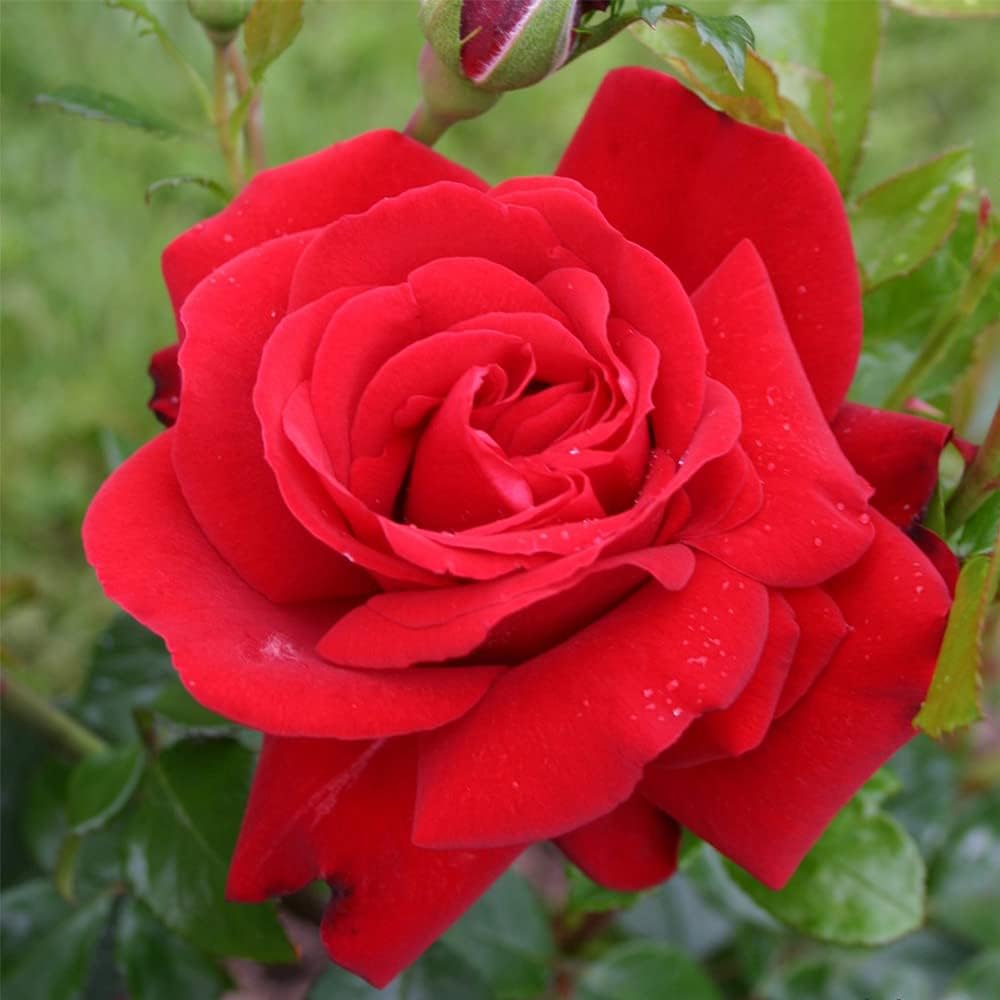Desmond Tutu rose

Desmond Tutu Rose: A Tribute to Elegance and Resilience
The Desmond Tutu rose, named in honor of the esteemed South African social activist and Nobel Peace Prize winner, is a striking addition to any garden. Introduced by Amanda Beales in the United Kingdom in 2009, this rose variety boasts deep-red blooms and robust growth, making it a favorite among gardeners and pollinators alike.
Characteristics of Desmond Tutu Rose
- Name: Desmond Tutu Rose (Beafatty)
- Breeder: Amanda Beales (United Kingdom, 2009)
- Type: Floribunda
- Color: Medium red
- Petals: 26-40
- Fragrance: Moderate
- Height: 2-3 feet (60-90 cm)
- Width: 2-3 feet (60-90 cm)
- Bloom Form: Full, high-centered buds opening into elegant blooms
- Foliage: Glossy, dark green, and disease-resistant
- Blooming: Repeat blooms in flushes throughout the season
- Hardiness Zone: Zone 5
- ARS Rating: 7.9
A Flower of Distinction
This rose stands out with its large, elegant, deep-red flowers that open from high-centered buds. These blossoms are often formed in clusters, creating a full bouquet effect with just a few stems. This floribunda rose, known for its robust and consistent performance, has earned a Gold medal in international competitions, reflecting its superior qualities.
Blooms Throughout the Season
Gardeners appreciate the Desmond Tutu rose for its excellent repeat blooming. The flowers appear in flushes throughout the growing season, ensuring a continuous display of vibrant color. Each bloom, with its complete, high-centered form and moderate fragrance, adds a touch of elegance to garden beds, borders, or pots.
Disease Resistance and Foliage
This rose features glossy, dark green foliage that is attractive and highly resistant to common rose diseases. This resilience makes it a low-maintenance choice for gardeners who want stunning flowers without needing disease management.
Ideal for Various Garden Uses
This rose’s versatility shines in its various uses in the garden. Whether planted in beds, borders, or pots, the Desmond Tutu rose adds a dramatic splash of color. Its moderate height and compact growth habit make it suitable for smaller garden spaces, while its striking blooms attract pollinators, enhancing the garden’s biodiversity.
Growing and Caring for Desmond Tutu Rose
Light and Soil Requirements
Plant the rose in a location that receives full sun, ideally six or more hours of direct sunlight daily. This ensures vigorous growth and abundant flowering. The rose prefers well-draining soil with a neutral to slightly acidic pH. Amend the soil with organic matter to improve its texture and fertility.
Watering and Fertilizing
Roses require regular watering, especially during dry periods. Water deeply at the base of the plant, avoiding overhead watering to prevent disease. A consistent inch of water per week is ideal. Fertilize the rose with a balanced rose fertilizer according to the manufacturer’s instructions. This supports robust growth and prolific blooming.
Pruning
Prune the rose in late winter or early spring before new growth begins. Remove any dead or diseased wood and trim the plant by one-third to one-half its size. This encourages new solid growth and abundant flowers in the coming season.
Pest and Disease Management
Due to its disease-resistant foliage, this rose requires minimal intervention for pests and diseases. However, regularly monitoring and maintaining good garden hygiene helps avoid potential problems. Remove fallen leaves and spent flowers to reduce the risk of disease.
The Desmond Tutu rose, with its stunning deep-red blooms, moderate fragrance, and robust growth, is a tribute to the legacy of its namesake. With its disease-resistant foliage and continuous blooming, this floribunda rose is an excellent choice for gardeners seeking beauty and resilience. Plant the Desmond Tutu rose in your garden to enjoy its elegance and honor a figure who has inspired many.
